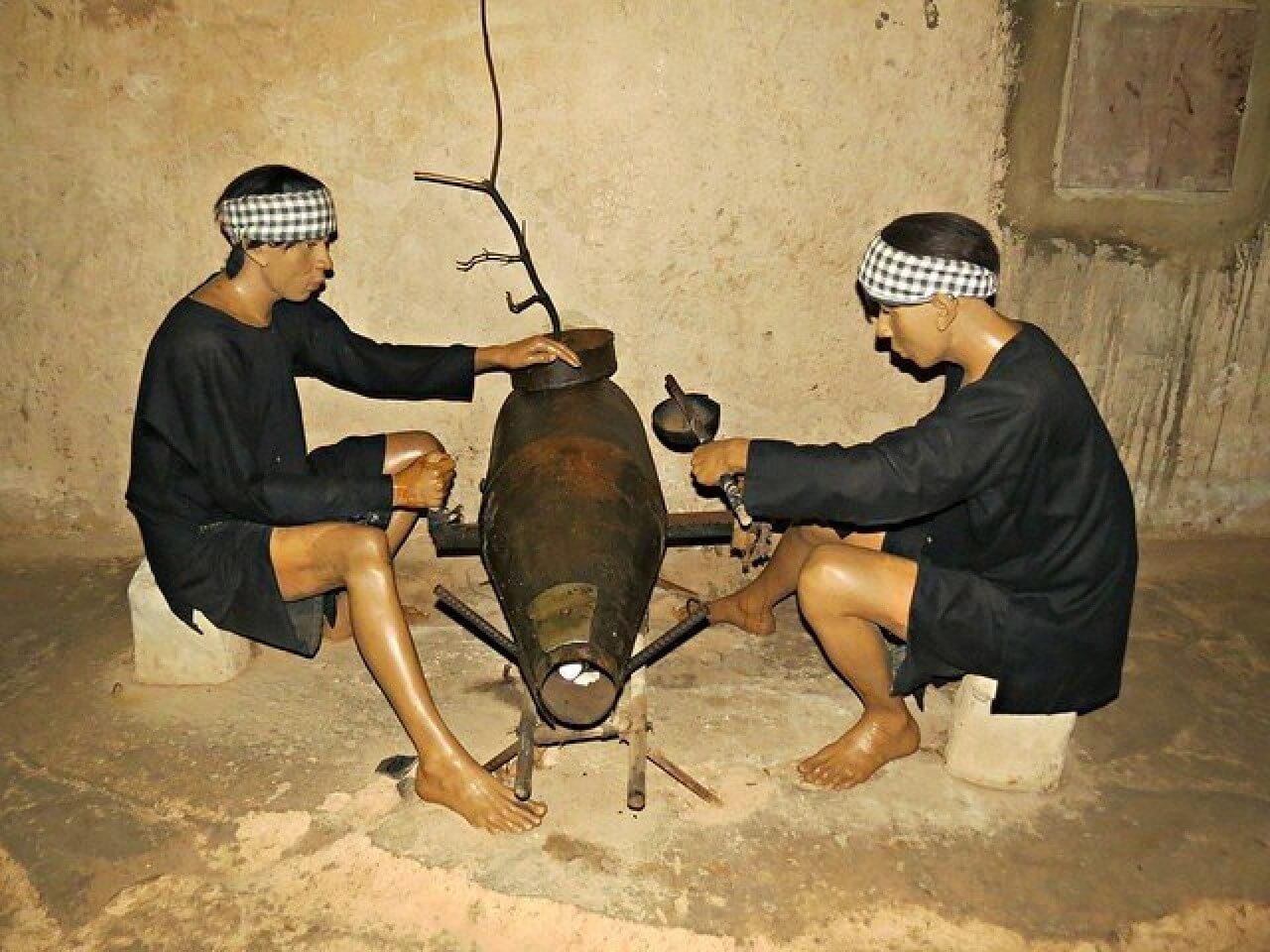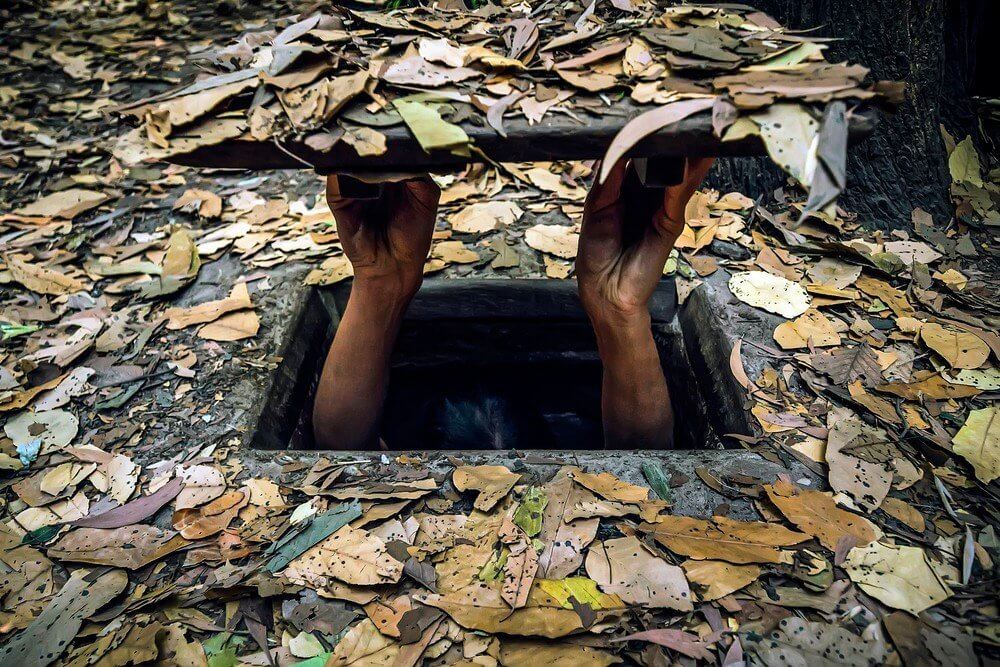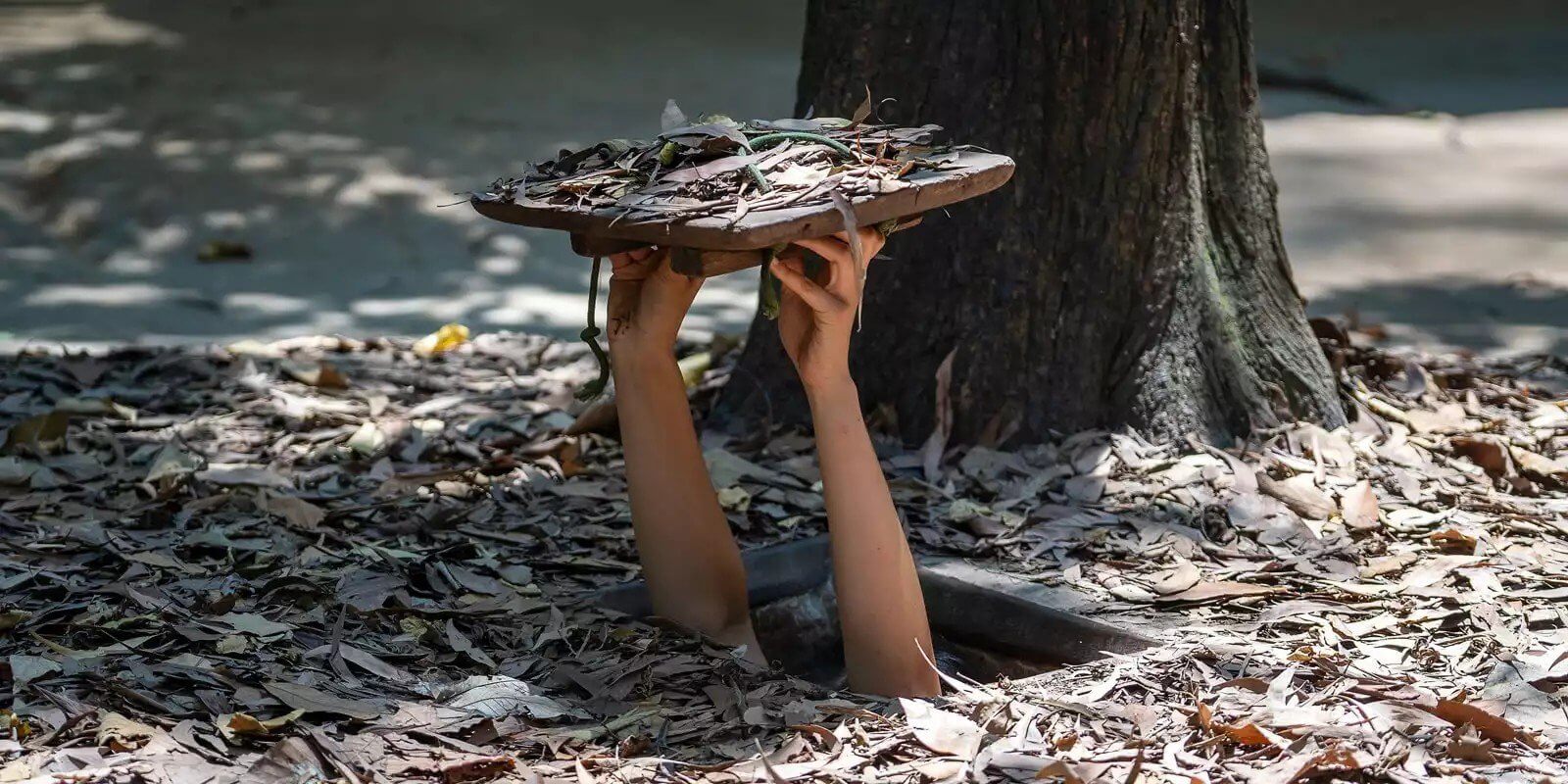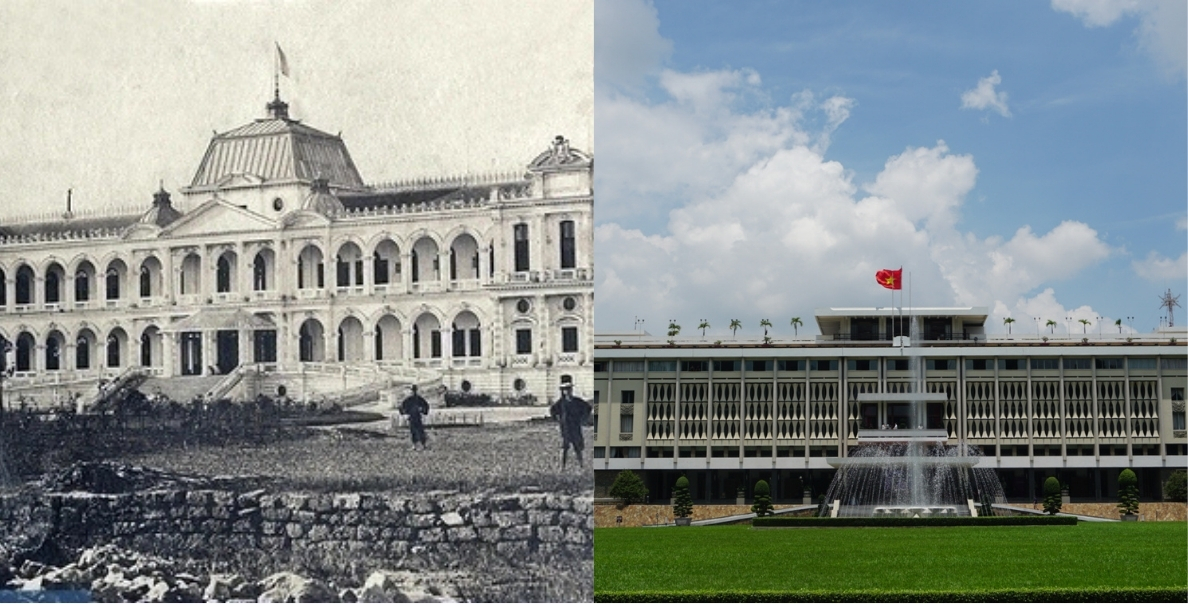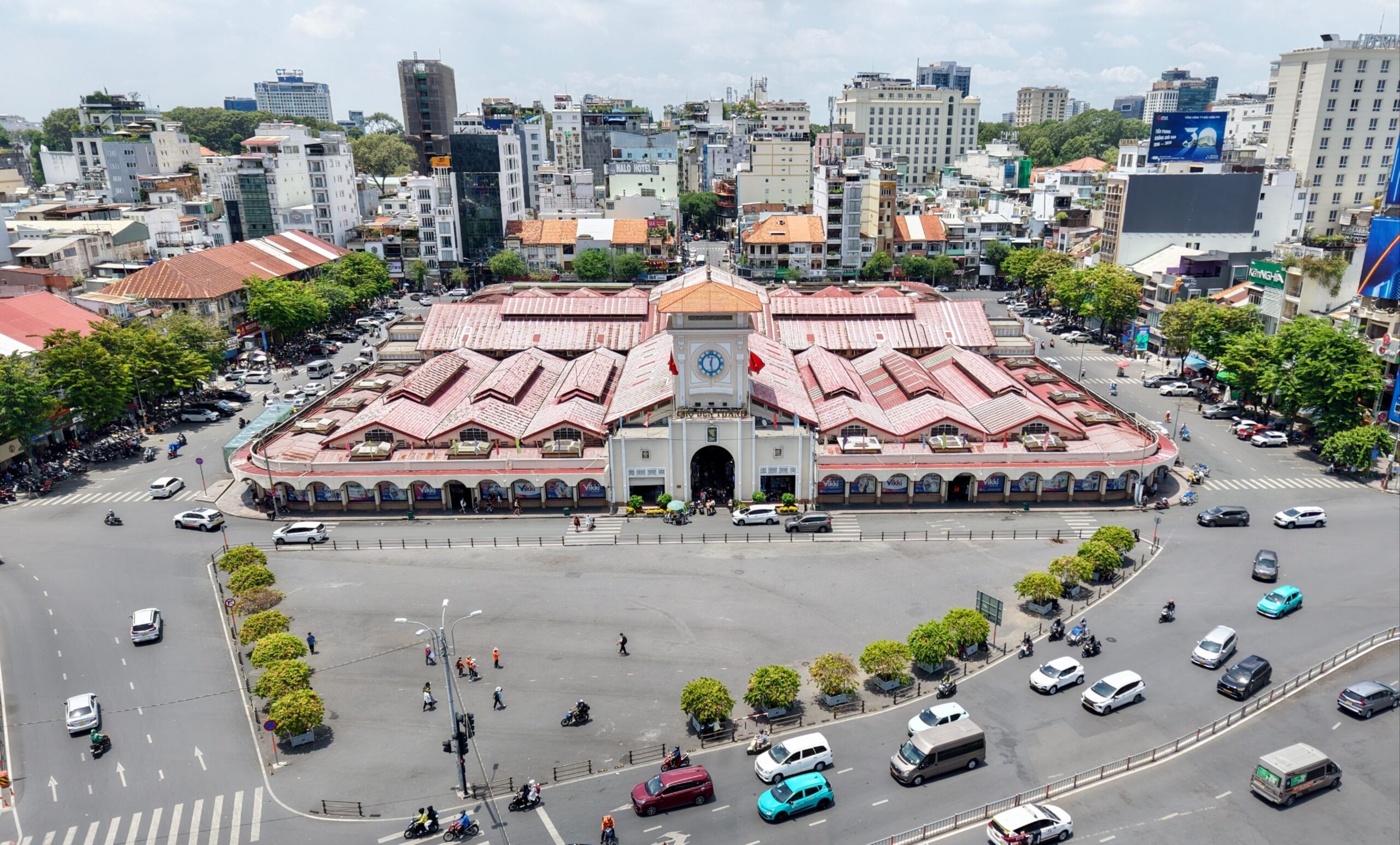
The Cu Chi Tunnels – A Comprehensive Guide for Visiting 2023
Page Contents
- 1 Cu Chi Tunnels – The Overview of legendary network
- 2 Where is the Cu Chi Tunnels?
- 3 How to get to Cu Chi Tunnels
- 4 Private Car
- 5 Bus
- 6 Motorbike
- 7 How many systems are there in Cu Chi Tunnels?
- 8 How much time do you need to visit the cu chi tunnels.
- 9 What activities can I take in the cu chi tunnels?
- 10 Explore the Cu Chi tunnels
- 11 Watch a documentary about the Cu Chi Tunnels
- 12 Visit the exhibits of the Cu Chi Tunnels
- 13 Try shooting a gun in the Cu Chi Tunnels
- 14 Experience the life of a soldier
- 15 Do I need to spend all the time inside the Cu Chi tunnels?
- 16 What’s The Simulation Area of the Cu Chi Liberated Area
- 17 How many periods of The Simulation Area ?
- 18 The first period of the Simulation Area was from 1963 to 1968
- 19 The second period was from 1968 to 1972
- 20 The third and final period of the Simulation Area was from 1972 to 1975
- 21 What should I do to visit the Cu Chi Tunnels?
- 22 Plan your visit ahead of time
- 23 Wear appropriate clothing
- 24 Bring water and snacks
- 25 Bring insect repellent
- 26 Listen to your guide
- 27 Don’t touch or remove anything
- 28 What should i try to eat in Cu Chi Tunnels
- 29 How much for a tour to Cu Chi Tunnels?
Cu Chi Tunnels – The Overview of legendary network
The Cu Chi Tunnels in Ho Chi Minh City’s Cu Chi district have a fascinating and intricate history that goes back to the Vietnam War. Used as a base of operations by the Viet Cong, a communist guerrilla force fighting against the South Vietnamese government and its allies, the tunnels allowed the Viet Cong to hide from enemy forces, transport weapons, and supplies, and launch surprise attacks.

Built-in the late 1940s during the Vietnamese struggle against French colonial rule, the tunnels were continually expanded and improved over the years, ultimately stretching more than 250 kilometers (155 miles) by the 1960s. The tunnels were incredibly narrow and cramped, with some sections measuring only 70 centimeters (28 inches) in width.
Despite efforts by the South Vietnamese and their allies to destroy the tunnels, they remained a thorn in the side of the US military and the South Vietnamese government. The Viet Cong launched successful surprise attacks against enemy forces, and the tunnels provided a haven for guerrilla fighters and their families.
Where is the Cu Chi Tunnels?
The Cu Chi Tunnels are located in the Cu Chi district of Ho Chi Minh City (formerly known as Saigon), in southern Vietnam. They are approximately 70 kilometers (43 miles) northwest of Ho Chi Minh City.
How to get to Cu Chi Tunnels
Here are a few options for transportation:
Private Car
The most convenient way to get to Cu Chi Tunnels is by hiring a private car or taxi. You can negotiate the price with the driver, and they will pick you up from your hotel or any other location in Ho Chi Minh City. The journey takes approximately 1-1.5 hours, depending on traffic.
Bus
Several tour operators offer bus tours to Cu Chi Tunnels, which include hotel pick-up and drop-off. You can book these tours online or through a travel agency. The journey takes approximately 1.5-2 hours, depending on traffic.
Motorbike
If you’re feeling adventurous, rent a motorbike and drive to Cu Chi Tunnels. However, this is only recommended for experienced riders, as the roads can be busy and chaotic. It’s important to note that there are tolls on the highway to Cu Chi Tunnels, which are not included in the rental fee.
Whichever mode of transportation you choose, arriving early in the morning is recommended to avoid the crowds and the heat. The site opens at 7:30 AM and closes at 5:00 PM.
How many systems are there in Cu Chi Tunnels?
There are 2 tunnel sites to visit called Ben Dinh and Ben Duoc
Ben Duoc and Ben Dinh are two different sections of the Cu Chi Tunnels in the Cu Chi district of Ho Chi Minh City, Vietnam. While both areas offer visitors a chance to explore the underground tunnels used by the Viet Cong during the Vietnam War, there are some differences between the two.
Ben Duoc is the larger and more rural of the two sections, and it’s located about 12 kilometers further west of Ben Dinh. This section is known for its extensive tunnel network, which includes multiple levels and hidden entrances. Visitors to Ben Duoc can see various historical artifacts and displays related to the Vietnam War, such as weapons, traps, and living quarters. A memorial temple on site also honors the soldiers who fought and died during the war.
On the other hand, Ben Dinh is closer to Ho Chi Minh City and more accessible for visitors who are short on time. This section has been restored and improved for tourism, and it features wider tunnels and more lighting than Ben Duoc. Visitors to Ben Dinh can also see displays of war artifacts and watch a short film about the tunnels’ history.
How much time do you need to visit the cu chi tunnels.
If you’re starting from Ho Chi Minh City, planning a half-day trip to the Cu Chi Tunnels is recommended. This will allow you enough time to travel to the site, explore the tunnels, and return to the city.
Most tours to Cu Chi Tunnels from Ho Chi Minh City typically take 5-6 hours, including transportation time. This includes hotel pick-up and drop-off, travel time to and from the site, and a guided tour of the tunnels.
If you plan to visit the site independently, you can reach the tunnels by bus or private car. The journey takes approximately 1-2 hours, depending on traffic. Once you arrive at the site, you can purchase a ticket and explore the tunnels at your own pace. It’s recommended to plan for at least 3-4 hours at the site if you want to explore the tunnels in detail and learn about their history.
What activities can I take in the cu chi tunnels?
There are several activities you can do when visiting the Cu Chi Tunnels:
Explore the Cu Chi tunnels
The site’s main attraction is the extensive tunnels used during the Vietnam War. You can crawl through sections of the tunnels to get a sense of what life was like for the soldiers who lived and fought in them.
Watch a documentary about the Cu Chi Tunnels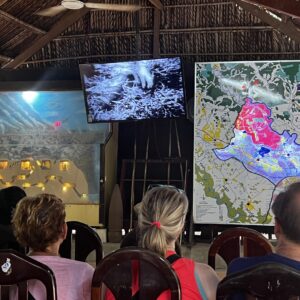
Several documentaries are shown at the site that provides more information about the history and significance of the tunnels.
Visit the exhibits of the Cu Chi Tunnels
The Cu Chi Tunnels have several exhibits that showcase the weapons, traps, and other equipment used by the soldiers during the war. There are also displays of historical photographs and artifacts.
Try shooting a gun in the Cu Chi Tunnels
There is a shooting range on site where you can shoot various guns used during the war, including AK-47s and M16s.
Experience the life of a soldier
The site has several recreations of the living quarters and kitchens used by the soldiers, which provide a glimpse into their daily lives.
Do I need to spend all the time inside the Cu Chi tunnels?
You do not need to spend all your time inside the tunnels when visiting the Cu Chi Tunnels. While the tunnels are the site’s main attraction, there are other activities and exhibits you can enjoy as well.
If you have claustrophobia or feel uncomfortable crawling through tight spaces, you can still learn about the tunnels and their history by watching a documentary or visiting the exhibits. You can also take a break from the tunnels and explore the surrounding area or enjoy a meal at one of the on-site restaurants.

crawl_through_the_tunnels_cu_chi_tunnels
That being said, if you want to experience the tunnels firsthand and get a sense of what life was like for the soldiers who lived and fought in them, spending at least some time inside the tunnels is recommended. However, depending on your comfort level and interests, you can decide how much time you want to spend inside the tunnels.
What’s The Simulation Area of the Cu Chi Liberated Area
The Simulation Area of the Cu Chi Liberated Area was a unique and important feature of the Military Liberation Zone (MLZ) during the Vietnam War. It was a specially designed area where the Viet Cong could simulate and practice military operations in a controlled environment, using mock-ups of real-life targets and scenarios.
The Simulation Area was located in the Cu Chi District of Ho Chi Minh City, and it covered a large area of jungle and farmland. The area was designed to resemble real-life targets and situations, such as military bases, roads, bridges, and villages. The Viet Cong used the Simulation Area to train their soldiers in a range of military skills, such as ambush tactics, mine laying, and small unit tactics.
The Simulation Area was also used to test new weapons and tactics, and to develop innovative ways of fighting against the South Vietnamese and American forces. For example, the Viet Cong developed a range of booby traps and improvised explosive devices (IEDs) in the Simulation Area, which they then used to deadly effect in real-life combat situations.
How many periods of The Simulation Area ?
The Simulation Area was a crucial part of the Viet Cong’s strategy for fighting the war, as it allowed them to develop and test new tactics and weapons without risking the lives of their soldiers in real combat situations. It was also essential for building morale and confidence among Viet Cong troops, as they could see the results of their training and practice in a controlled environment.
The first period of the Simulation Area was from 1963 to 1968
during the early stages of the war. At this time, the Viet Cong were primarily focused on building up their forces and infrastructure in the Cu Chi District, and the Simulation Area was used for training and testing new tactics and weapons.
The second period was from 1968 to 1972
during the height of the war. At this time, the Viet Cong were intensely fighting with the South Vietnamese and American forces, and the Simulation Area was used to develop new strategies and weapons to counter their opponents. This period saw the construction of many new mock-ups of military targets and scenarios, and the development of a range of booby traps and improvised explosive devices (IEDs).
The third and final period of the Simulation Area was from 1972 to 1975
during the final stages of the war. At this time, the Viet Cong were on the defensive as the South Vietnamese and American forces began to gain the upper hand. The Simulation Area was used to train new recruits and to develop last-ditch strategies and tactics to resist the advancing troops.
What should I do to visit the Cu Chi Tunnels?
The Cu Chi Tunnels are a network of underground tunnels located in Cu Chi District, Ho Chi Minh City, Vietnam. The Viet Cong used the tunnels during the Vietnam War and have since become a popular tourist destination in Vietnam. Visiting the Cu Chi Tunnels is a unique and fascinating experience, but knowing a few tips is essential before you go.
Plan your visit ahead of time
Before you go to the Cu Chi Tunnels, make sure to plan your visit ahead of time. Decide on the date and time of your visit, and book your tickets in advance. This will help you avoid long lines and wait times at the entrance.
Wear appropriate clothing
The Cu Chi Tunnels are in a tropical climate, so wear comfortable and breathable clothing. Avoid wearing tight-fitting clothes as the tunnels can be narrow and cramped. Wear comfortable shoes as there will be a lot of walking involved.
Bring water and snacks
Visiting the Cu Chi Tunnels can be a long and tiring experience, so make sure to bring water and snacks with you. There are vendors selling food and drinks near the entrance, but they can be expensive. Bringing your own snacks and water can save you money and keep you hydrated during your visit.
Bring insect repellent
it is recommended to bring insect repellent when visiting Cu Chi Tunnels as the site is in a jungle area with many mosquitoes and other insects. This will help to protect you from mosquito-borne diseases such as dengue fever or malaria. Additionally, wearing long-sleeved shirts and pants and using mosquito nets in your accommodations can help prevent mosquito bites.
Listen to your guide
When you visit the Cu Chi Tunnels, you’ll be assigned a guide to take you through the tunnels. Listen to your guide and follow their instructions carefully. They’ll be able to provide valuable information about the tunnels’ history and how they were used during the war.
Don’t touch or remove anything
While visiting the tunnels, respecting the history and artifacts is essential. Don’t touch or remove anything from the tunnels, including weapons or ammunition. This is not only disrespectful but also dangerous.
What is the local food can I try in the Cu Chi Tunnels?
Fresh tapioca is also a popular food item often associated with the Cu Chi Tunnels. Tapioca is a starchy root vegetable commonly used in Vietnamese cuisine. It is particularly popular in the Cu Chi area due to the abundance of tapioca plantations in the region.
One of the most popular ways to enjoy fresh tapioca in Cu Chi is to try tapioca noodles, which are made by grinding fresh tapioca into a paste and then forming it into thin noodles. These noodles can be served with various dishes, such as grilled pork or shrimp, and are often accompanied by fresh herbs and vegetables.
What should i try to eat in Cu Chi Tunnels
fresh tapioca is also a popular food item that is often associated with the Cu Chi Tunnels. Tapioca is a starchy root vegetable commonly used in Vietnamese cuisine. It is particularly popular in the Cu Chi area due to the abundance of tapioca plantations in the region.
One of the most popular ways to enjoy fresh tapioca in Cu Chi is to try the tapioca noodles, which are made by grinding fresh tapioca into a paste and then forming it into thin noodles. These noodles can be served with various dishes, such as grilled pork or shrimp, and are often accompanied by fresh herbs and vegetables.
How much for a tour to Cu Chi Tunnels?
The cost of a tour to the Cu Chi Tunnels can vary depending on the type of tour you choose, the tour duration, the transportation and the tour provider you book with.
Generally, prices can range from around 29 to 70 USD per person for a half-day tour (usually around 5-6 hours) and from around 45 to 90 USD per person for a full-day tour (generally around 8-9 hours).
Some tour providers also offer private tours or customized tours, which can be more expensive. Additionally, admission fees to the Cu Chi Tunnels site are usually not included in the tour price and may cost around 5-10 USD per person.
The Cu Chi Tunnels are a must-see attraction for anyone visiting Vietnam. Don’t miss your chance to explore this incredible piece of history – book your tour today and get all the best offers here

